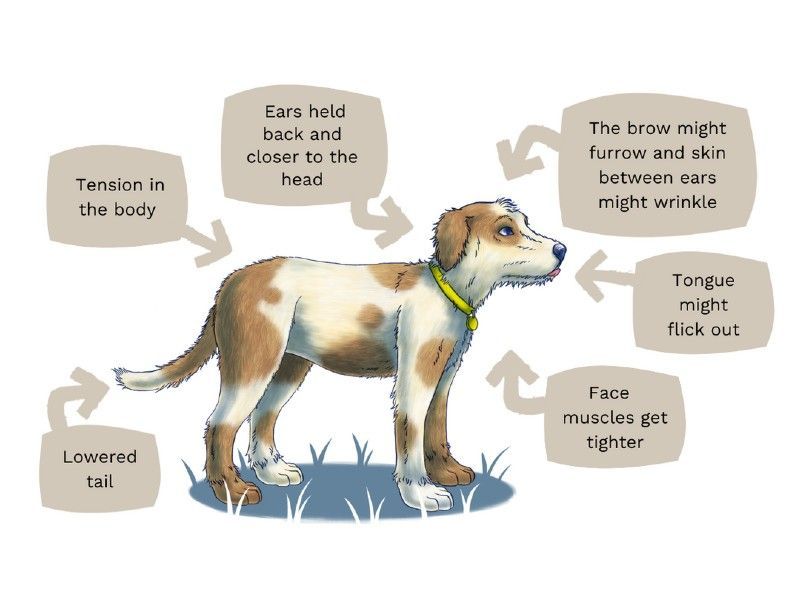Introduction
We’ve all seen those adorable videos of dogs experiencing “zoomies” – when they excitedly sprint and spin around the house. But sometimes a dog’s erratic running and behavior isn’t so cute. In fact, it can be concerning and indicate an underlying issue.
While zoomies are generally harmless, erratic behavior that seems out-of-control or distressing is not. If your dog has started darting around anxiously, running into objects, or acting restless and hyperactive, it’s important to understand the potential causes.
Distinguishing Zoomies from Erratic Behavior
Zoomies are bursts of frantic energy in dogs characterized by sprinting, jumping, spinning, and general excitement. They are considered normal behavior, especially in puppies and younger dogs. Zoomies are usually seen when a dog is happy and excited during or after play. They tend to be short bouts of energy release that end as quickly as they started (Petplan).

In contrast, erratic behavior refers to abnormal behavior that can stem from medical or behavioral causes. Erratic behavior may include running around without a clear stimulus, repetitive pacing or circling, hiding, trembling, whining, etc. This type of concerning behavior persists and does not resolve itself like a typical zoomies episode would (Richell USA).
While zoomies are considered normal, erratic behavior can indicate an underlying medical or behavioral problem requiring veterinary attention. Key differences are that zoomies are brief bursts of energy in response to excitement, while erratic behavior is abnormal, repetitive, and persistent.
Common Causes of Erratic Behavior
There are several potential medical causes for erratic behavior in dogs. Some of the most common include:
- Seizures and epilepsy – Seizures can cause a dog to behave erratically, seem disoriented, vocalize, or fall over during an episode. Epilepsy is a chronic condition characterized by recurrent seizures.
- Neurological issues – Conditions like encephalitis, brain tumors, head trauma, or hydrocephalus can impact the brain and lead to abnormal behavior. Signs may include restlessness, compulsive circling/pacing, stumbling, head pressing, personality changes.
- Toxin ingestion – Eating toxic substances like lead, poisonous plants, or rodenticides can cause neurological symptoms like twitching, tremors, and seizures.
- Dementia – As dogs age, they can develop canine cognitive dysfunction leading to disorientation, anxiety, restlessness.
- Pain – Discomfort from arthritis, injuries or illness may manifest as agitation or irritability.
It’s important to get a veterinary exam to diagnose potential medical issues causing behavioral changes. Diagnostic tests like bloodwork, imaging, spinal taps, or brain scans may be recommended. Addressing the underlying cause, when possible, can help resolve abnormal behaviors.
Behavioral Causes

Erratic or hyperactive behavior can often stem from behavioral causes like anxiety, stress, or boredom. Dogs that lack sufficient exercise and mental stimulation can become restless and act out. Common signs include jumping, spinning, barking, biting, digging, chewing, and other hyperactive behaviors. This is especially common in high energy breeds like herding dogs or terriers if their needs aren’t being fully met.
Stress and anxiety from changes in routine, a new home, separation, or loud noises can also cause dogs to behave erratically. They may pace, tremble, whine, hide, or compulsively lick themselves. Phobias of things like thunder or fireworks can trigger frantic running and destruction. Dogs that don’t get proper socialization as puppies may also react fearfully to new people, animals, places, or experiences.
In some cases, erratic behavior can signal an underlying medical issue like thyroid disease. But often behavioral causes like boredom, anxiety, or lack of exercise are the root of the problem. Increasing daily walks, play time, and activities can help calm restless energy in many dogs. Providing interactive toys and puzzles for mental enrichment is also beneficial. Creating a predictable routine, minimizing stress triggers, and using calming aids like pheromones or CBD oil can ease anxiety. Consulting with a veterinary behaviorist may be needed for severe behavioral issues.
Signs of Erratic Behavior
Dogs exhibiting erratic behavior may display a variety of concerning symptoms and signs. Some common signs of erratic behavior in dogs include:
- Pacing – the dog walks back and forth repetitively without any apparent purpose or goal.
- Spinning – the dog turns round and round in quick circles.
- Head shaking – the dog rapidly shakes their head from side to side.
- Restlessness – the dog seems unable to relax or settle down, constantly shifting positions and moving around.
Pacing, spinning, head shaking, and restlessness are all signs of a dog feeling anxious, stressed, or agitated. These repetitive behaviors may indicate the dog is experiencing discomfort, confusion, or compulsion. While occasional pacing or head shaking may be normal, frequent erratic movements likely signify an underlying issue that needs veterinary attention. If your dog displays any of these concerning symptoms, monitor the behavior and consult with your vet, especially if the signs persist or worsen.
Risks of Erratic Behavior
A dog exhibiting erratic, uncontrolled behavior can potentially cause harm to themselves, others, or property. Some of the key risks include:

Injury: Dogs acting erratically may run into objects, fall down stairs, or crash into windows or furniture, leading to injuries like lacerations, bruising, fractures, concussions, and more. Their uncontrolled movements make them prone to self-harm.
Destructive behavior: Dogs in an erratic state may start chewing, scratching, digging, or tearing things apart. They can destroy carpets, furniture, drywall, shoes, and more in the home. Outside, they may dig up gardens and landscaping.
Hurting pet owners: People trying to control or restrain an erratic dog are vulnerable to bites or scratches as the dog thrashes around. Elderly individuals or small children are especially at risk of injury. Even large, strong adults can get knocked down and hurt by a large, out-of-control dog.
It’s critical to identify and address the underlying cause of a dog’s erratic behavior to protect their safety and that of the people and property around them. Consulting a veterinarian can help rule out medical issues provoking the behavior.
Getting a Veterinary Evaluation
It is crucial to take your dog to the veterinarian for a full medical evaluation if they are exhibiting sudden, unusual, or erratic behavior. There are many potential medical causes that could lead to behavioral changes in dogs, so it is important to rule these out first.
Some examples of medical issues that may manifest as erratic behavior include: brain tumors, thyroid disease, liver disease, kidney disease, seizure disorders, cognitive dysfunction syndrome, medication side effects, pain, or neurological problems. Dogs are unable to communicate to us verbally when they are not feeling well, so their behaviors and actions are often the primary way for owners to identify a potential health problem.
Your veterinarian will perform a full physical exam and discuss your dog’s behavioral history in depth. They may recommend medical tests such as bloodwork, urinalysis, imaging, or specialized testing to check organ function and rule out any underlying disease. Early intervention greatly improves the chances of successfully managing medical conditions, so do not delay in seeking veterinary advice if your dog is acting erratically.
While the vet visit may not always identify a specific medical cause, it is still a critical first step. Your veterinarian can provide guidance on next steps such as referral to a veterinary behaviorist. Getting an accurate diagnosis through comprehensive veterinary care allows for tailored treatment plans to help improve your dog’s quality of life. [1]

Behavior Modification Strategies
If your dog is exhibiting erratic behavior, there are several techniques you can try to modify their behavior before turning to medication or more intensive treatment. The goal of behavior modification is to replace unwanted behaviors with more desirable ones through consistent training. Some strategies to try include:
Increasing Exercise: Getting your dog more exercise and mental stimulation through walks, play time, and interactive toys can help calm erratic behavior that stems from pent up energy. Gradually increase the amount of activity per day.
Training Obedience & Commands: Work on basic training like sit, stay, down, and come. This establishes you as the pack leader and provides mental exercise. Use positive reinforcement methods and keep training sessions short and fun. Practice commands in various settings. [1]
Anxiety Reduction Techniques: If anxiety contributes to erratic behavior try techniques like crate training, calming music, or dog-appeasing pheromone collars/sprays. Reduce stressors in the home and stick to a predictable routine.
With time and consistency, using a combination of increased exercise, training, and anxiety reduction you can modify undesirable behaviors in dogs through behavior modification. But seek veterinary advice if the behavior persists or worsens.
When to Seek Help from a Professional
In some cases, erratic behavior in dogs will not improve on its own and may require professional assistance. According to the ASPCA, if a dog’s problematic behavior persists, worsens, or significantly impacts their quality of life over an extended period of time, it’s recommended to seek help from an animal behavior specialist [1].
Signs that a dog’s erratic behavior requires professional intervention include [2]:
- The behavior puts the dog or others in danger
- The behavior worsens even after attempting training/behavior modification at home
- The dog is acting aggressively or erratically on a daily basis
- The behavior is significantly impacting the dog’s or family’s quality of life
In these cases, a consultation with a veterinary behaviorist or a certified dog trainer/behavior consultant is recommended. They can help identify the underlying cause of the erratic behavior and create an effective behavior modification plan tailored to the individual dog.
Recap main points, reiterate importance of identifying cause, leave reader clear action steps
In closing, erratic behavior in dogs should not be dismissed as simple zoomies. While zoomies are harmless bursts of energy, erratic behavior may indicate an underlying medical or behavioral issue that requires veterinary attention. Recapping the main points, erratic dog behavior may stem from medical causes like neurological disorders or behavioral causes like anxiety. Careful observation of the signs and timing of erratic behavior can help identify the potential cause. If the behavior persists, worsens, or impacts your dog’s well-being, promptly consult your veterinarian. With a proper diagnosis, you can work on training and lifestyle changes to address the root issue. Your dog’s comfort and welfare should remain top priority. Stay vigilant of any concerning behavioral shifts, and don’t hesitate to seek professional help when needed. With care and patience, you and your vet can get to the bottom of your dog’s erratic behavior.
